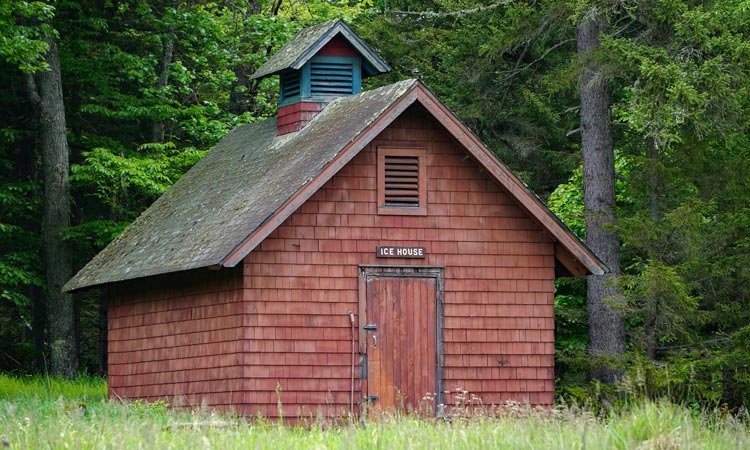Grandpa first introduced me to the ice house on his dairy farm when I was just a tot. After the cows were milked and the raw milk put into sterilized bottles in the creamery, the bottles were submerged in ice water in the ice house. There was no refrigeration there in 1952, just good insulation and a thick door to keep the heat out. The bottles of milk were kept fresh in ice water in a large metal tub. Then, very early each morning, the wooden crates of glass bottles were put into the milk truck with big chunks of ice on top and delivered to the surrounding households. Fresh milk daily.
This milk wasn’t pasteurized or homogenized. Cream for coffee was skimmed off the top, or the milk was shaken by hand to blend in the cream. Of course, the cream could also be shaken by hand to turn it into butter. The raw milk came from healthy cows, and a lot of people believed that it had healing properties. Later on in my childhood, government rules and regulations made the selling of raw milk impossible, but my earliest memories were of raw milk and the simple processes that went into its production.
The barn where the cows quietly waited in their stanchions, the creamery where the milk was bottled, and the ice house were all fascinating to me. I loved the green fields dotted with wildflowers where the cows grazed each day. I loved the smell of the grain and the hay they fed on as they waited to be milked. I loved playing hide-and-seek and other games in the barn with my brother, sisters, and cousins.
One of the games we played at the dairy was sneaking into the ice house and seeing who could keep their hand in ice water the longest. I can still remember the sting of the freezing water as I tried with all my might to hold my hand in it. The cold would turn into a burn, and when I pulled my hand out, it would be bright red. It was so cold it felt like it was on fire.
Another time, I’d gone out sledding on a wintry morning with my cousins, and it was so much fun that I didn’t think about the snow melting through my mittens or the wetness seeping through my boots. When we went inside, I realized that something was wrong, and my hands and feet hurt so much that I couldn’t even go into a warm bath. I had to sit in cool water that was gradually warmed up until I could feel warm again.
I was remembering these experiences and thinking about the heartbreaking losses in my life. Grief has an icy cold edge to it. My grandfather’s death was my first great loss at fourteen years old. It was a stinging pain that reminded me of holding my hand in the ice water in the ice house or sitting in the cold bath water trying to thaw out my fingers and toes. I felt like my heart was not just broken, it had been submerged and frozen. It hurt so much that I couldn’t tell if it felt hot or cold. It just really hurt, and it took gentle changes to begin to feel again.
But I did. With time, I began to feel warm inside again. The chilling pain went away, and I could look back at my time in the ice house of grief and focus on the sweet memories, my time spent with my grandpa as a child. I continue to look back and draw strength from the simple and profound life lessons he taught me.
The lessons the ice house teaches are difficult ones. Whenever you find yourself there, be gentle with yourself and allow yourself time to feel and heal. Don’t expect to plunge back into normal life or try to distract yourself by staying busy or entertained by other things, or you’ll find yourself hurting even worse. Find a trusted person who allows you to feel, someone who can cry with you when you need to cry and laugh with you when you need to laugh, and everything in between. Don’t forget or try to block out the memory of the ice house or you’ll miss its deep and valuable lessons. Respect your heart and give it time to heal.
